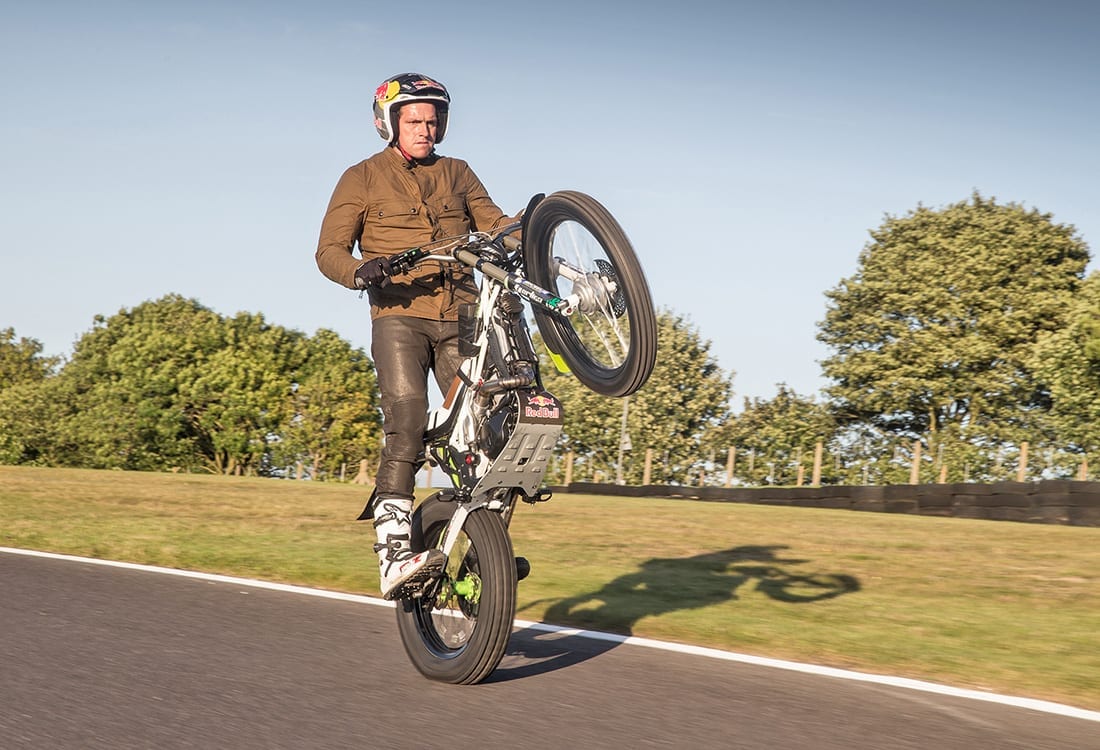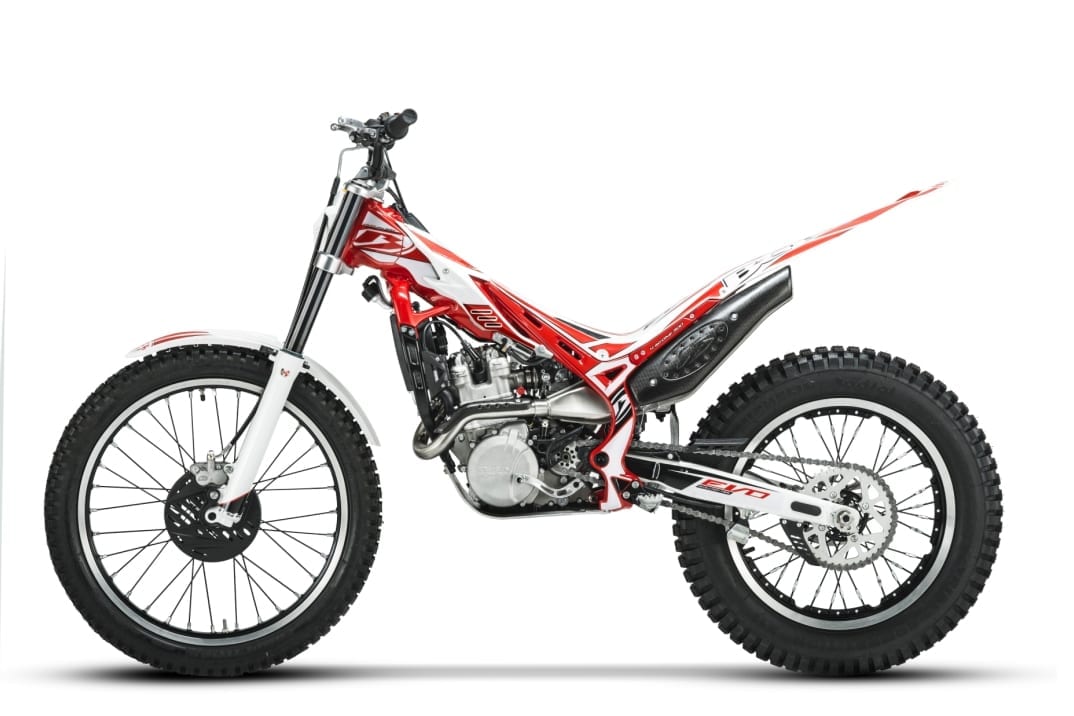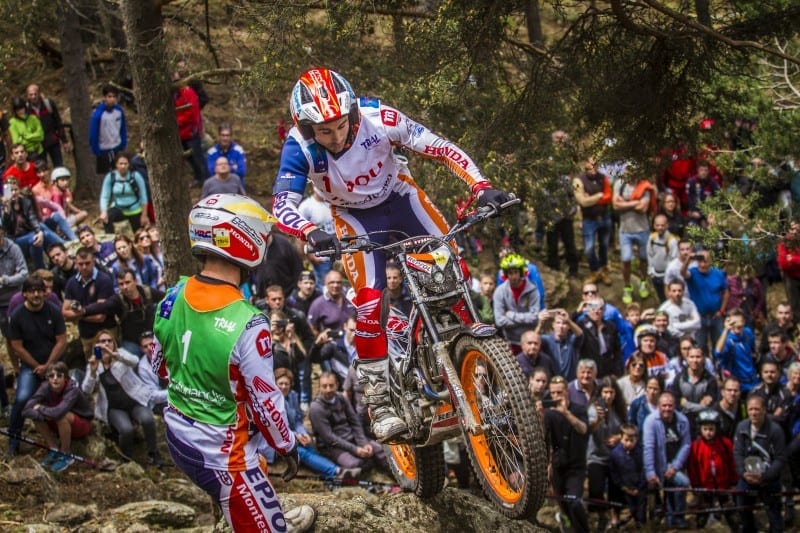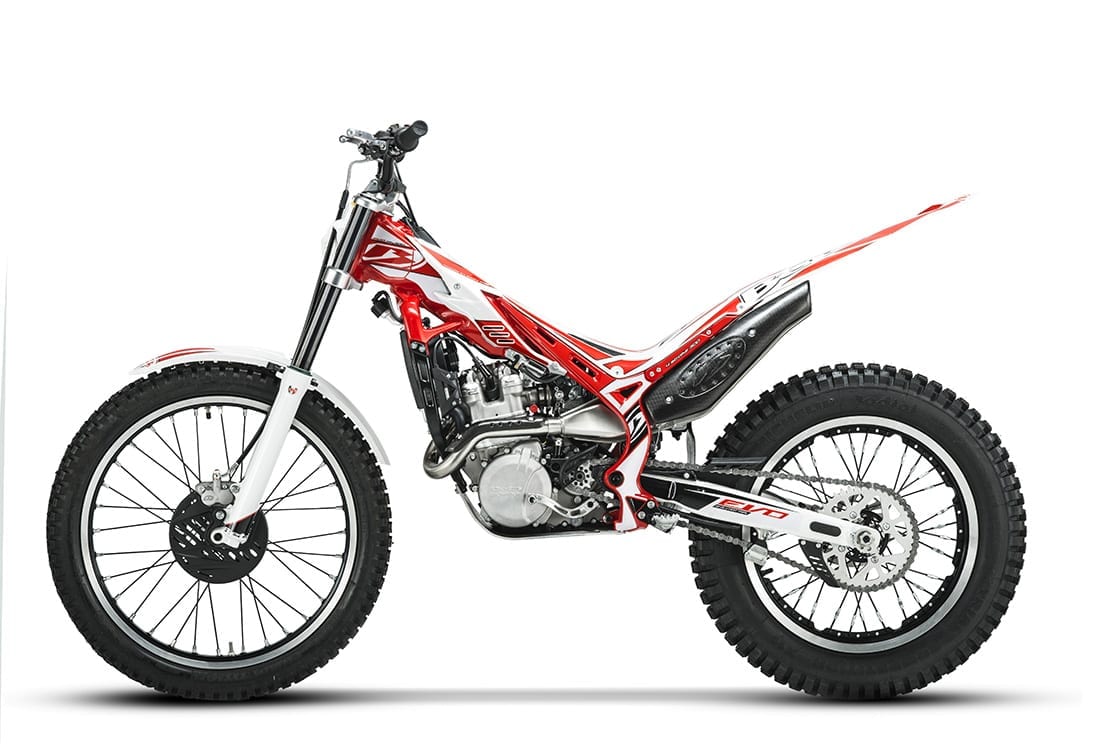Update: Dougie's wheelie challenge
By TMX Archives on 7th Sep 16

As previously announced in TMX, Red Bull athlete Dougie Lampkin will take on one of his toughest ever challenges,when he attempts to wheelie continuously around the entire Isle of Man TT course on Saturday, September 24.
This will be shown Live on Red Bull TV, where viewers from around the globe have the opportunity to watch Dougie navigate the two hundred plus corners that lay ahead of him.
In order to complete this challenge Dougie and his engineering team led by Francesc Romani and Blackie Holden have spent the last six months creating a specially modified bike for the task in hand. It simply would not be possible to ride solely on the rear wheel for 37.7 miles on a standard trial bike.
Using a Vertigo Combat Ice Hell - 300cc Fuel injected single cylinder two-stroke as the base machine, the following modifications have been made thanks to the support of the Vertigo factory in Spain and Hope Technology in the UK:
1 Front wheel - 36v electric motor fitted to the hub in order to keep the front wheel spinning throughout the duration of the challenge.
This is vitally important as the gyroscopic effect creates the required stability and allows the bike to be steered despite the front wheel being lofted throughout.
Power to the front wheel can be controlled by a tension wire connected to the chest of the rider - whilst the wheel will always be spinning - its speed can be varied by body position to compensate for the undulating nature of the course, this helps the overall control of the bike.
2 Front brake - The standard front disc / caliper and master cylinder has been completely removed as it has no purpose.
However, a modified master cylinder has been fitted on the right hand side of the handlebar (where the front brake would normally be located) that actually operates the rear brake.
3 Front forks - As per the front brake, the front suspension has no purpose for this particular challenge, hence the standard internals have been removed and replaced with an almost rigid set up that is much lighter.
4 Fuel Injection - The electronic mapping has been re-mapped to optimise fuel consumption and to produce a smooth power delivery within a confined range that allows the height of the front wheel to be carefully and consistently controlled throughout.
5 Gearbox - Changes to the front and rear sprockets means that the majority of the course can be ridden in one gear.
A modified sixth gear has been fitted to cope with the additional strain and the oil flow/ level within the gearbox has been modified to compensate for the angle at which the bike will be operated for the two-hour period.
6 Fuel tank - The standard 2.7 litre fuel tank that is mounted under the seat area on the bike does not have sufficient capacity to allow the 37.7 miles to be covered without refuelling.
A secondary handmade carbon fibre fuel tank has been made to increase the capacity to 5 litres to provide the required range.
This secondary tank is mounted in the centre of the bike to minimise the impact that the change in fuel load will cause over the duration of the challenge.
The carbon fibre structure has been extended rearwards and is hollow towards the back section to house the additional electronics to power the front wheel motor and to provide a suitable surface area to allow knee contact that aides the steering process and stability especially in the case of side-winds on the exposed sections of the mountain part of the course.
7 Rear shock - The internals and spring on the rear shock has been modified in order to create a much stiffer set-up than normal.
8 Rear brake - The riding position has been moved from the standard footrest location to specially adapted footplates attached to the rear wheel spindle.
Hence the position of the rear brake pedal and master cylinder has also been moved to the same place and mounted on a specially designed and CNC produced aluminium mounting plate.
The same plate also houses two separately operated rear brake calipers.
The first is operated by foot via the newly located rear brake pedal and second via the hand-operated lever on the right hand side of the handle bar where the front brake would normally be located.
The two independent systems not only help prevent rider fatigue, as the operation can be shared via foot and hand, but more importantly the design prevents overheating of the brake fluid in each system as the load can be split on the more demanding descents on the course when the rear brake will be used extensively to control the bike.


